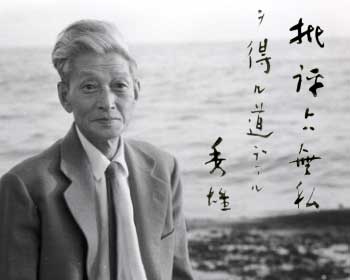When I was a kid, I used to chase butterflies in the fields and woods.
Hermann Hesse, Morio Kita, Takeshi Yoro. Many people profess to have fond recollections of the boyhood when they sought for the insects in the wild. It seems that such boyhood days remain to be an epitome of happiness, well into the mature age.
For me, the intense feeling accompanying the passage of time waiting for a butterfly among the greens, in the vibrant ambience of a hot summer forest, is connected with the most intimate and happy memories of my life.
However, from a certain period of time I stopped chasing the butterflies with the aim of collecting them. I grew wary of "pushing" the "breast" of butterflies. (I used to call the part between the head and abdomen as "breast" when I was a child. The proper anatomical name for it is actually "thorax".) I became shy of pressing that part of butterflies to their premature deaths. It was a reflection of the newly found self-awareness of what I was doing, in that subtle stage of growing up.
I started my "professional" chasing of butterflies when I was five. One of the first things that I learned was to push the breast, so that the precious wings would not be hurt. "You thus suffocate the butterfly, and put it to sleep", said Mr. Aoki in an as-a-matter-of-fact manner. Otherwise, the wings will be destroyed. Mr. Aoki was studying entomology at a University in Tokyo at the time. Mr. Aoki became my mentor in collecting and studying butterflies in a scientific way. It was my mother who originally "introduced" me to Mr. Aoki when I was about five years old.
When I was 10, my father took me to the "Gensei Kaen" flower fields in the suburb of Abashiri city, Hokkaido. It was a trip of my fantasy, a journey I dreamed of for a long time. There, I pushed the breasts of Kabairoshijimi, or Glaucopsyche lycormas, a small and elegant butterfly species. The bluish white creatures of elegance had been enjoying their airborne lives and visiting various flowers round the unmanned station of a local railway. They were unfortunate enough to be captured in my net. These butterflies would not have anticipated their destiny.
And the small butterflies passed away, pressed between my fingers, on that beautiful summer day.
The nervous system of a butterfly is not highly developed. When their breasts were pressed, the butterflies would not have felt anything by human standards. The summer flower fields are full of naturally caused deaths, with or without my presence. The lives of butterflies are short. They wings get the beak marks from the attacks of birds. Their vitalities wither rather rapidly, until the field is piled with their dead bodies here and there, unseen and uncared.
However, from a certain period of my life, I started to feel ill at ease at my own fingers bringing premature deaths to the small arthropods.
The ancient Chinese philosopher Zhuangzi once dreamed of being a butterfly. When Zhuangzi awoke, he no longer knew whether a human being was dreaming of being a butterfly, or a butterfly was dreaming of being a human being.
The butterflies seem to tell us the vulnerability of life, and the enigma of the passage of time.
It is not clear to me, at this moment, whether I will start chasing the butterflies again in any time of my life. I don't know if I could ever press the breasts of the butterflies caught in my eager net, in an innocent manner as in my childhood.
One thing is certain. I still carry in my heart the memories of the vibrant touch of the humble lives of butterflies, caught between my fingers in the passage away from this world.
Translated from the original Japanese essay in Ken Mogi, "Ikite Shinu Watashi" ("I live, I die") published from Tokuma Shoten, Tokyo, 1998. Translation by the author.

The cover of "Ikite Shinu Watashi"

















